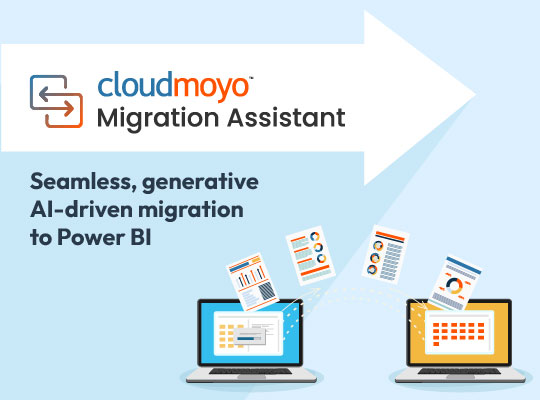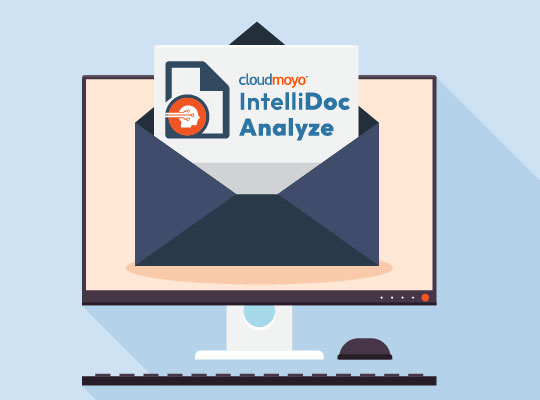In today’s technology world, data generated on a day to day basis from different sources is enormous. This data can have valuable information that can help executives to take effective decisions. Organizations use Business Intelligence (BI) to cater to this but only a proper utilization of business intelligence can help organizations to improve the productivity and ultimately increase the revenues. As per research, $1 invested in business data analysis may generate up to $10.66 ROI on average. But there is no assurance unless you are using your BI effectively.
#1: Lack of BI Strategy
Organizations should proactively define the problems they trying to solve. Only then they will be able to identify the right Business Intelligence solution that will suit their requirements. This is because once BI is implemented, executives should know the pros and cons of the solution they are using and how the solution could add value to them. Hence devising a strategy before adopting a solution is very important as confusion may lead to the failure of the adoption. Attempting BI without the fundamental preconditions for success in place is likely to be frustrating, painful, costly, and destined to fail.
A good practice would be to go for assessment and review the existing business processes. This will help to gather critical requirements necessary for laying out a proper roadmap and devise overall Business Intelligence and Data Management strategy. This should be followed by a Proof of Concept (PoC) to validate the solution and create a business case.
#2: Business Intelligence when you don’t know how to code
Now a days, executives find it difficult to access the right data at right time. And even if they do find what they’re looking for, data formats are typically so complex and unstructured it’s hard to find out meaningful and relevant data. Now unless they are using Excel extensively, they probably would not get much satisfaction (or value) from their BI system.
A good practice would be to replace Excel Sheets with intuitive dashboards to make data more engaging, meaningful and eventually very powerful. Hence for this a BI Solution should provide the ability to create advanced filters and calculations all without coding. A self-service business intelligence solution enables executives to create customized reports in no time with little involvement of IT once the entire solution is implemented.
Read 3 ways self-service BI can help your organization
#3: Lack of Training & Execution
Many a times, companies might have well-articulated requirements, a sound BI strategy, and a good tool solution, but lack technical skills like designing, building, maintaining, and supporting BI applications. This results in BI applications to run slowly, break frequently, deliver uncertain results and eventually leading to rising cost of using the BI solution. The causes of lack of execution often are multiple and varied, as are its remedies.
Organizations should more focus on helping to understand their resources why is a BI solution needed and the benefits of a BI Solution as well. Resources should be in line with the executives on the gains that they can get by the use of their newly adopted BI Technology. Organizations should spend wisely on providing ongoing training, so that users understand how to use the system.
#4: Lack of BI impact (Low utilization)
Management might always wonder why there is no change in business results attributable to BI and might feel that business value of BI investments not captured. This indicates that the organization is not utilizing the BI solution at par with global standards and best practices. This is because executives are unclear on how their company could benefit from BI. Management may not be able to use information in the system and even may not be aware that it even exist. As a result, they are not satisfied with what investments in BI have yielded the organization, and therefore are reluctant to approve any additional funding for BI. They might even pull the funding, and spend that budget somewhere else.
What should matter to executive is how they use data and how accessible the data is in order to do something with it. It’s time for business intelligence implementations to stop relying on dull, uninspired pivot tables and spreadsheets and start presenting data in compelling visuals that are easy to understand and loaded with insight.
In such case, Executives and the BI Solution they are using to stop relying on spread sheets and start using actual BI to present the data intuitively. This will enable BI to unlock the full value of the data it gathers and deliver the desired ROI.
Quick Tip: Reclaim hours in your day when you discover how easy it is to analyze, visualize, and share insights with Power BI. Get started with a quick Power BI proof of concept.
#5 Business Intelligence with unstructured data
Most of the times data is unstructured for BI to analyze. This lead to a problem when users need to perform simple BI Processes. Businesses may invest in big data analytics but cannot complete the tasks in time. They may result to people spending hours on cleaning and structuring the data first and then using the BI solution.
A BI solution which could be loaded with automatic ETL capabilities to process data sets that need to be restructured will be a real solution here. This will enable users to create a single source as well as a front-end with data visualization capabilities. Ideally, the back-end of the solution would be able to manipulate the data for it to be analyzed in the front-end. Hence, the front-end will then allow users to visualize data in dashboards, reports and graphs.
Quick Tip: Use Azure Data Lake Store to unlock maximum value from all of your unstructured, semi-structured, and structured data. To know how this can help your business, click here
#6 Installation and Deployment
A painful BI solution installation and deployment would be difficult to maintain. Even an unplanned & rushed deployment would be unsuccessful so often. Doing this may leave users void with time to understand the system and develop the skills using the solution effectively.
Executives can take a step by step approach to implement a BI solution. They can make a list identifying business problems and rather than expecting to solve every business problem all at once, they can try to prioritize specific outcomes they want to achieve. They can solve the issues consecutively until they have incrementally solved all the problems on the list and then think of implementing a BI solution
Conclusion: Done right, BI can be very effective
This repetition of common BI problems might demotivate businesses to lose and question the value of business intelligence. Use of BI can be challenging at the beginning but the potential business benefits make it worth the investment. Having said that there is always a solution to a problem, these problems do have a solution as well
These solutions could be:
- Treatment of BI as a business process improvement initiative rather than an IT centric undertaking
- Focus on supporting key business objectives with better information embedded in specific business processes
- Use of a BI-specific development methodology, such as Decision Path’s BI Pathway method
Many organizations don’t possess the internal BI expertise necessary to recognize their BI challenges and leverage these solutions to prevent and overcome them, but with solid strategy and guidance, organizations can harness the power of BI for improved business results and demonstrable business value.
If any of these challenges sound all too familiar, it may be time to consider CloudMoyo, which helps managers and executives transform the way they run their business. CloudMoyo is specialized in the areas of Cloud (Azure) computing, Big Data and Advanced Analytics including the use of Power BI for visualizations. We are a Microsoft Gold Cloud Competency and Data Analytics Partner. Our key service areas include Microsoft Analytics Consulting, Modern Data Architecture, Cloud Data Migration using the Microsoft Business Intelligence Platform. We bring together powerful business intelligence (BI) capabilities in SQL Server 2016, Azure Analysis Services and Power BI to transform your complex data into business insights and share across your organization.
Contact us to learn how easy a cloud-based, enterprise-wide business intelligence (BI) can be.



















